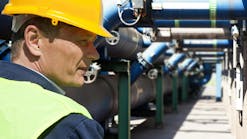Fish gender is far from straightforward. There are male fish, there are female fish, there are hermaphroditic fish, and then there are intersex fish—whose gender is altered by environmental influences.
In 2003 scientists first observed a concerning condition in which male fish had developed female eggs within their testes—a type of hormonal confusion indicative of endocrine disruption that rendered them intersex. Since then, feminized male fish have been discovered in 37 species in lakes and rivers throughout North America and Europe.
The cause has been linked to environmental estrogens, chemicals such as ethinyl estradiol, which is found in birth control pills. Other environmental factors that may contribute to fish feminization are low levels of dissolved oxygen and warming water temperatures.
A study by researchers at the University of Waterloo published January 10, 2017 in Environmental Science and Technology, examined the effects of upgrading equipment at a wastewater treatment plant located near Ontario’s Grand River. Researchers from the University of Waterloo found that the Kitchener Wastewater Treatment Plant’s 2012 conversion from a carbonaceous activated sludge treatment process to a nitrifying activated sludge treatment process “led to a 70 percent drop in fish that have both male and female characteristics within one year and a full recovery of the fish population within three years.” Nutrients used to remove ammonia in wastewater reduced the levels of endocrine disrupters of the water, and caused the number of intersex fish to decline.
The 10-year study focused on rainbow darters, a species of fish known to be very sensitive to estrogen concentrations and hormone disrupters. “Having long-term data of the fish population, before and after the wastewater treatment upgrades, makes this a truly unique study,” said Mark Servos, Canada Research Chair in Water Quality Protection in Waterloo’s Department of Biology. “The changes to Kitchener’s wastewater treatment system have had a much larger positive impact then we had anticipated.”
“This study demonstrated that investment in [wastewater infrastructure] upgrades improved effluent quality and was associated with an immediate change in biological responses in the receiving environment. This is an important finding considering the tremendous cost of wastewater infrastructure,” scientists reported.
What measures is your organization taking to increase the quality of its effluent and reduce concentrations of endocrine disrupters?



